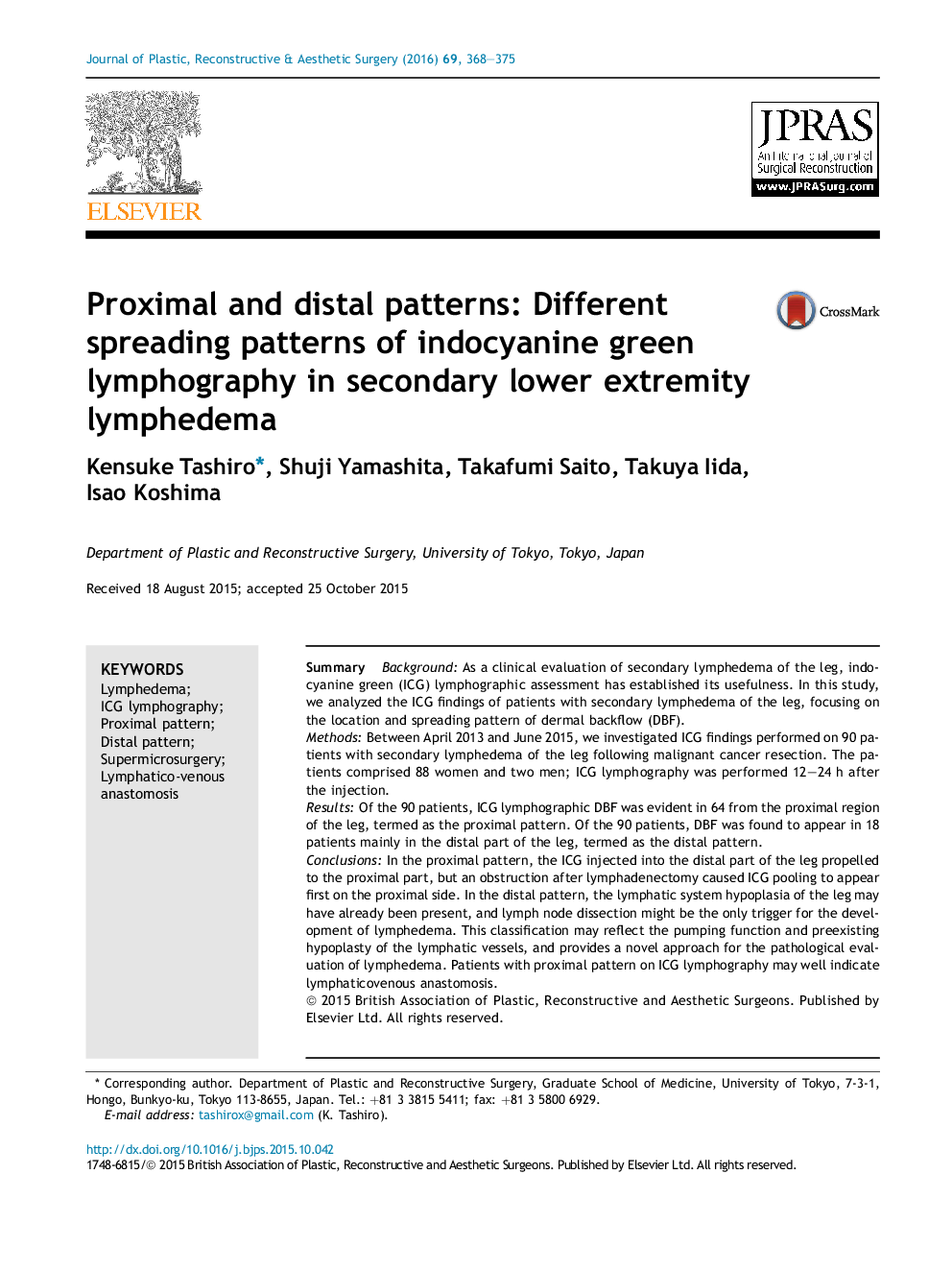| Article ID | Journal | Published Year | Pages | File Type |
|---|---|---|---|---|
| 4117526 | Journal of Plastic, Reconstructive & Aesthetic Surgery | 2016 | 8 Pages |
SummaryBackgroundAs a clinical evaluation of secondary lymphedema of the leg, indocyanine green (ICG) lymphographic assessment has established its usefulness. In this study, we analyzed the ICG findings of patients with secondary lymphedema of the leg, focusing on the location and spreading pattern of dermal backflow (DBF).MethodsBetween April 2013 and June 2015, we investigated ICG findings performed on 90 patients with secondary lymphedema of the leg following malignant cancer resection. The patients comprised 88 women and two men; ICG lymphography was performed 12–24 h after the injection.ResultsOf the 90 patients, ICG lymphographic DBF was evident in 64 from the proximal region of the leg, termed as the proximal pattern. Of the 90 patients, DBF was found to appear in 18 patients mainly in the distal part of the leg, termed as the distal pattern.ConclusionsIn the proximal pattern, the ICG injected into the distal part of the leg propelled to the proximal part, but an obstruction after lymphadenectomy caused ICG pooling to appear first on the proximal side. In the distal pattern, the lymphatic system hypoplasia of the leg may have already been present, and lymph node dissection might be the only trigger for the development of lymphedema. This classification may reflect the pumping function and preexisting hypoplasty of the lymphatic vessels, and provides a novel approach for the pathological evaluation of lymphedema. Patients with proximal pattern on ICG lymphography may well indicate lymphaticovenous anastomosis.
